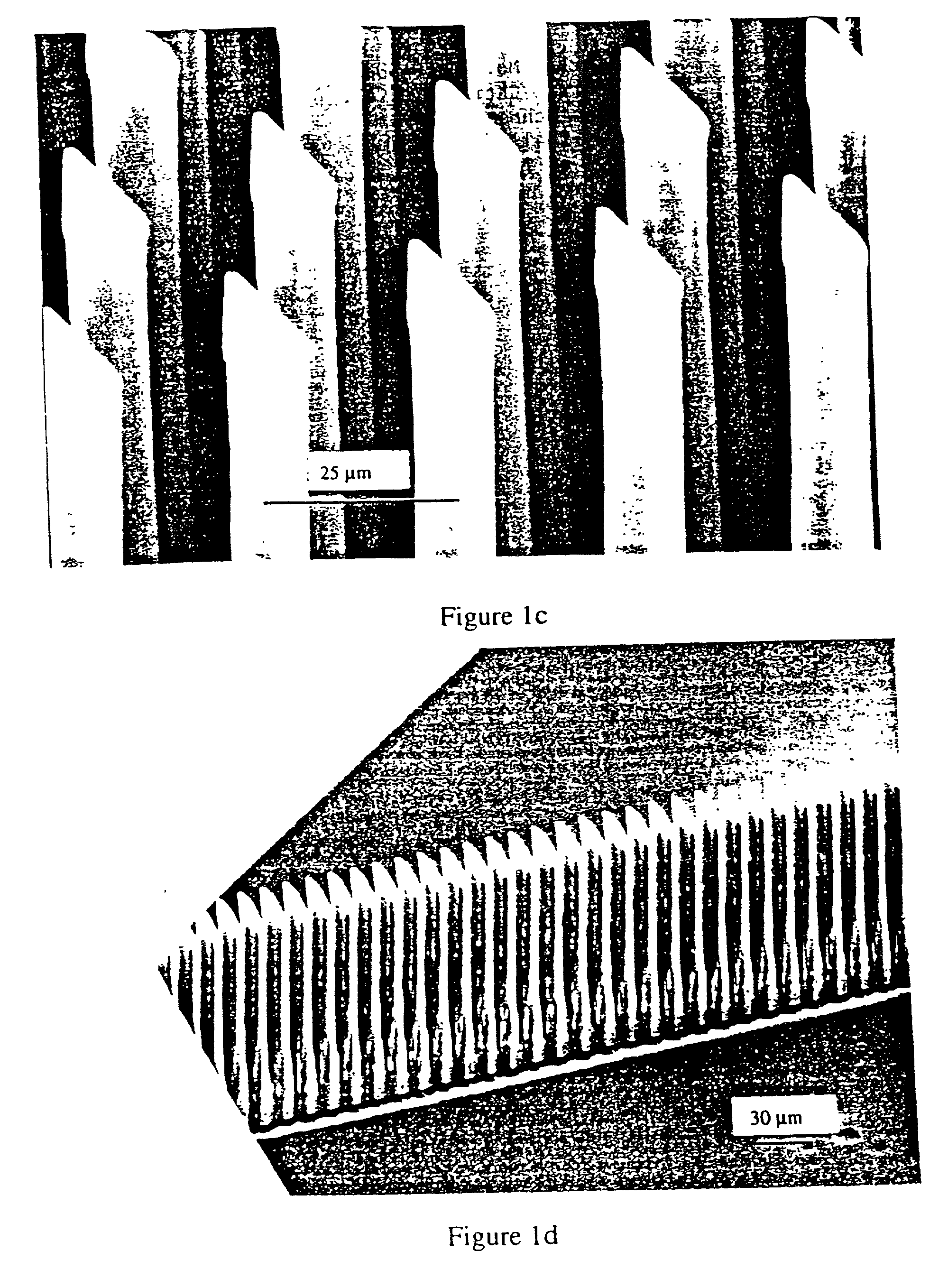Device and method for the manipulation of a fluid sample
a fluid sample and fluid technology, applied in the field of fluid sample manipulation devices and methods, can solve the problems of difficult mixing of fluids in microfluidic systems, ineffective conventional macroscopic design approaches, and slow mixing by diffusion
- Summary
- Abstract
- Description
- Claims
- Application Information
AI Technical Summary
Benefits of technology
Problems solved by technology
Method used
Image
Examples
example 2
[0065] The preceding Example teaches the production of microstructures with surfaces of bare silicon. To produce microstructures with insulating surfaces, such as silicon dioxide, a modified process is used.
[0066] The starting wafer is processed first through a thermal oxidation step to yield approximately 100 nm of oxide growth, and then coated with 100 nm of silicon nitride using low pressure chemical vapor deposition (LPCVD). The wafer is then processed through the photoresist patterning process described above in Example 1.
[0067] Before the DRIE etch, the nitride is etched using plasma etching (e.g. CF.sub.4 and O.sub.2), and then the oxide is etched using a buffered oxide etch (BOE). The wafer is then DRIE processed to produce the high aspect ratio structures. The photoresist is stripped, and the wafer is cleaned and further oxidized to produce an oxide on the sidewalls of the high aspect ratio structures with a thickness of 500 nm. The wafer is then put through a plasma etch p...
PUM
| Property | Measurement | Unit |
|---|---|---|
| height | aaaaa | aaaaa |
| width | aaaaa | aaaaa |
| height | aaaaa | aaaaa |
Abstract
Description
Claims
Application Information
 Login to View More
Login to View More - R&D
- Intellectual Property
- Life Sciences
- Materials
- Tech Scout
- Unparalleled Data Quality
- Higher Quality Content
- 60% Fewer Hallucinations
Browse by: Latest US Patents, China's latest patents, Technical Efficacy Thesaurus, Application Domain, Technology Topic, Popular Technical Reports.
© 2025 PatSnap. All rights reserved.Legal|Privacy policy|Modern Slavery Act Transparency Statement|Sitemap|About US| Contact US: help@patsnap.com



